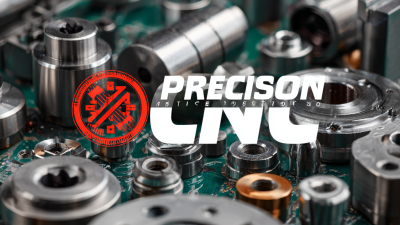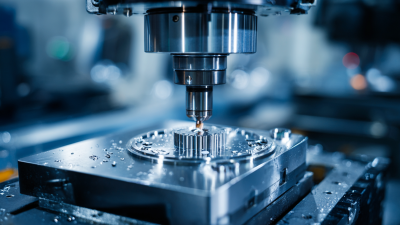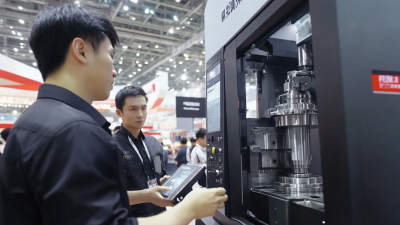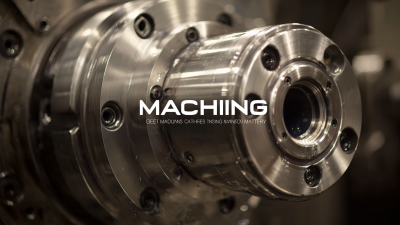In the contemporary manufacturing landscape, the quest for enhanced precision and efficiency has led to the emergence of innovative techniques in machining cutting. This crucial process not only impacts the quality of machined components but also significantly influences production costs and timeframes. Traditional methods of machining cutting often struggle to meet the ever-increasing demands for accuracy and productivity, prompting engineers and researchers to explore cutting-edge technologies.
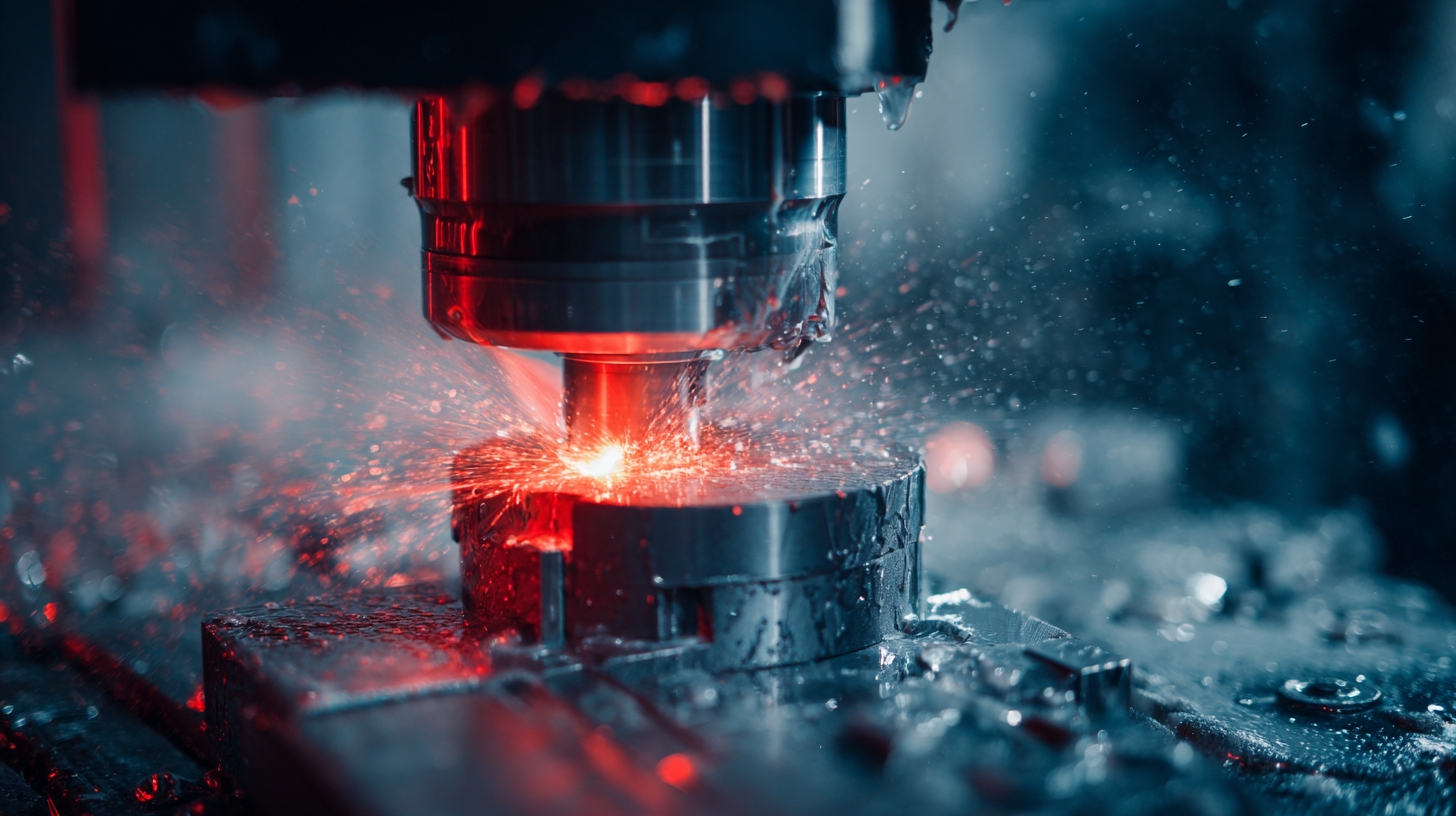
From advanced tool materials to novel machining strategies, the integration of these innovations has the potential to revolutionize the way components are crafted. By analyzing these pioneering techniques, we can uncover the reasons behind their effectiveness and applicability in various industrial contexts, ultimately paving the way for a new era of manufacturing excellence.
The landscape of machining cutting techniques is undergoing a transformative shift as industries pivot towards enhanced precision and efficiency. Recent insights from the CNC machine market indicate substantial growth, with projections estimating a market valuation increase from USD 134.96 billion in 2023 to USD 169.47 billion by 2032. This boom is largely attributed to the integration of advanced technologies, such as AI and machine learning, which are revolutionizing production processes across various sectors.
One notable trend is the rise of machine learning frameworks designed to enhance precision, particularly in metal 3D printing. Research from institutions like the University of Toronto is demonstrating how these innovations can drastically improve manufacturing outcomes, leading to less waste and higher-quality products. Moreover, emerging techniques like ultrasonic and laser-assisted machining are being explored for their potential to yield sustainable practices in industries such as leather production, highlighting the push towards environmentally responsible manufacturing.
Tip: To stay competitive, companies should invest in training for their workforce on new technologies and methodologies to ensure seamless adoption and optimal performance. Embracing these innovations will not only streamline processes but also enhance the overall quality of output. Additionally, organizations should regularly evaluate their machining strategies to integrate the latest advancements, ensuring they remain at the forefront of industry practices.
Advancements in tool materials and coatings have significantly transformed the landscape of machining cutting processes. Recent reports from leading industrial research firms indicate that the global market for advanced cutting tools is projected to reach $28 billion by 2026, with a compound annual growth rate (CAGR) of 7% from 2021. This growth can be attributed to the increasing demands for higher precision and efficiency in machining operations, where the right combination of material and coating can dramatically enhance performance.

High-performance tool materials, such as carbide composites and ceramics, are engineered to withstand extreme conditions, including high temperatures and abrasive environments. For instance, cemented carbides, which are utilized in up to 70% of cutting tools today, offer a remarkable hardness and wear resistance that enhances tool life and operational efficiency. Additionally, the introduction of advanced coatings, such as titanium nitride (TiN) and diamond-like carbon (DLC), has been proven to reduce friction and increase hardness, leading to substantial improvements in cutting speed and tool longevity. These innovations not only improve productivity but also minimize downtime and wastage in manufacturing, underscoring their importance in the competitive landscape of precision machining.
As the landscape of manufacturing evolves, automation and smart technologies are becoming integral to machining processes. The implementation of Industry 4.0 principles has allowed manufacturers to enhance precision while simultaneously increasing efficiency. Automation tools such as Industrial IoT and digital twins play a crucial role in this transformation, enabling real-time data analysis and process optimization. With these technologies, machining processes can be adjusted on-the-fly, leading to significantly reduced waste and improved product quality.
**Tips:** Investing in automation can yield substantial long-term benefits, but it's essential to start small. Focus on incremental changes and pilot projects for testing before full-scale implementation. This can help your team adapt to new technologies with less risk. Additionally, training your staff to work alongside these advanced systems is crucial, as their expertise will maximize the potential of smart manufacturing solutions.
The Asia Pacific region, particularly with its burgeoning machine tools market, exemplifies this shift. By 2033, projections suggest substantial growth driven by advancements in precision tools and smart manufacturing strategies. Companies that embrace these innovations will likely maintain a competitive edge, particularly in sectors requiring high precision, such as automotive and medical devices. The ongoing emergence of exhibitions like JIMTOF 2024 highlights the commitment of the industry to automation and the digitalization of manufacturing processes.
**Tips:** Regularly attending industry fairs and expos can provide insight into the latest technologies and trends. Networking at these events can also lead to partnerships that enhance your production capabilities. Keeping up with market forecasts is essential for making informed investment decisions in smart manufacturing technologies.
In the realm of machining, cutting processes are crucial for achieving high precision and efficiency. One of the most significant aspects that influence performance is the cooling and lubrication methods employed during cutting operations. Innovative cooling techniques, such as minimum quantity lubrication (MQL) and cryogenic cooling, have emerged as game-changers. MQL utilizes a minimal amount of lubricant, reducing waste and improving the environmental impact, while cryogenic cooling significantly lowers temperatures to enhance tool longevity and accuracy.
Tip: When implementing MQL, ensure that the delivered amount of lubricant is optimized for your specific materials and cutting speeds, as this can significantly affect the cutting performance and tool life.
Moreover, the introduction of advanced lubricants that function at molecular levels has proven to provide superior protection against friction and wear. These next-generation lubricants can adapt to different machining conditions, allowing for a more tailored approach to each cutting task. This adaptability not only increases efficiency but also boosts the overall quality of the machined parts.
Tip: Regularly monitor the performance of cutting tools and adjust coolant and lubrication strategies based on wear patterns observed, to continually optimize the machining process.

The integration of emerging technologies in CNC machining is driving significant improvements in efficiency and precision across various industries, particularly aerospace and defense. Advanced tooling technologies are not only enhancing production capabilities but also emphasizing sustainability, providing manufacturers with the tools they need to meet modern demands without compromising quality. As these industries adapt to new digital manufacturing techniques, they are experiencing increased productivity and streamlined processes.
Tip: To maximize the benefits of new CNC technologies, consider investing in training for your workforce. Skilled operators can leverage these innovations more effectively, leading to better overall outcomes.
Moreover, the CNC machine tools market is on an upward trajectory, projected to grow significantly in the coming years. The rise of AI in machine operations is redefining traditional workflows, reducing programming time drastically and enhancing the capabilities of CNC machines. This evolution underscores the importance of embracing new technologies to stay competitive in a fast-paced manufacturing landscape.
Tip: Regularly assess your current machining processes and explore the implementation of AI-driven solutions to optimize productivity and reduce operational costs.
This chart illustrates the impact of various innovative techniques on the efficiency and precision of CNC machining processes over the past five years.
